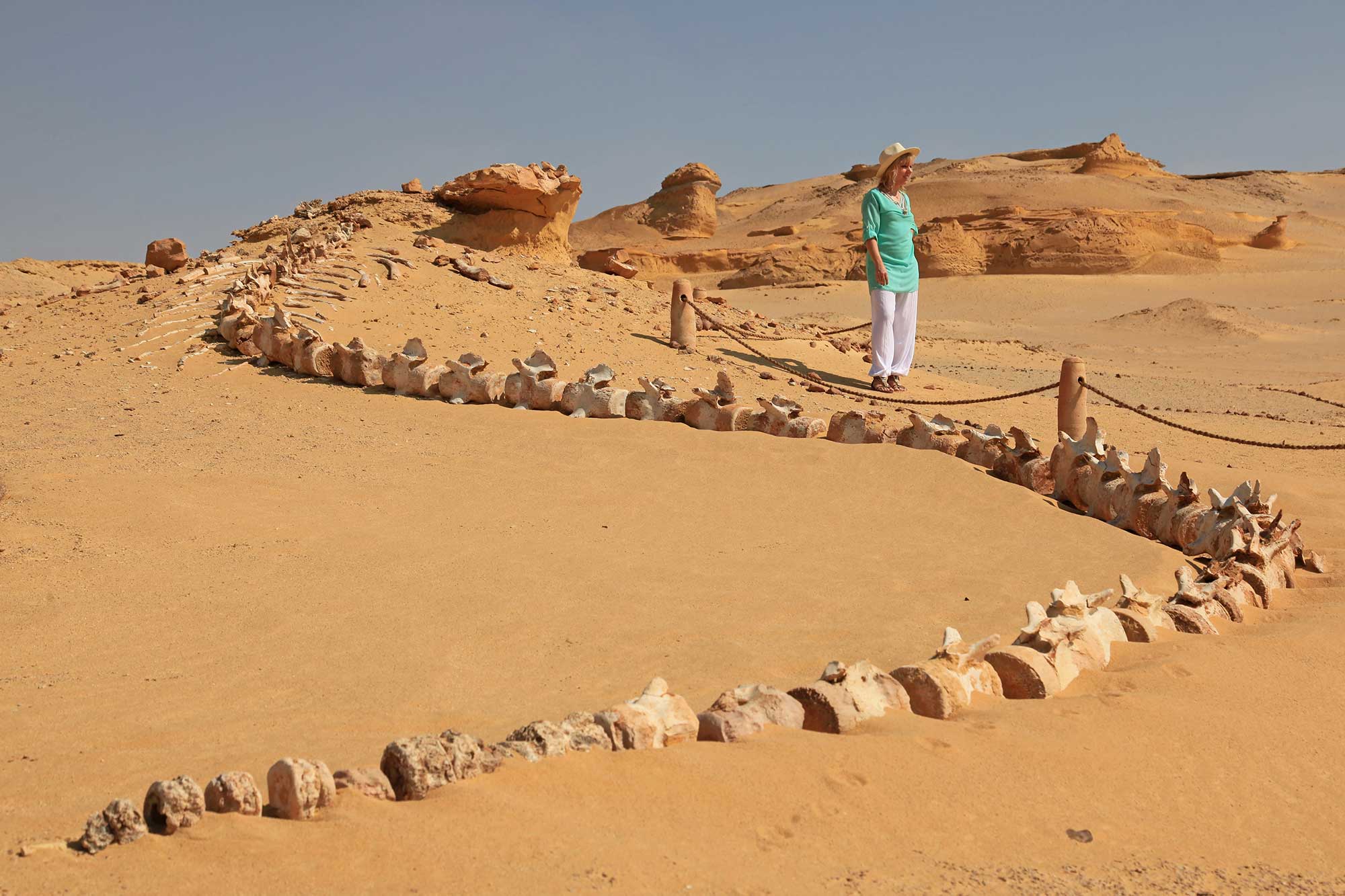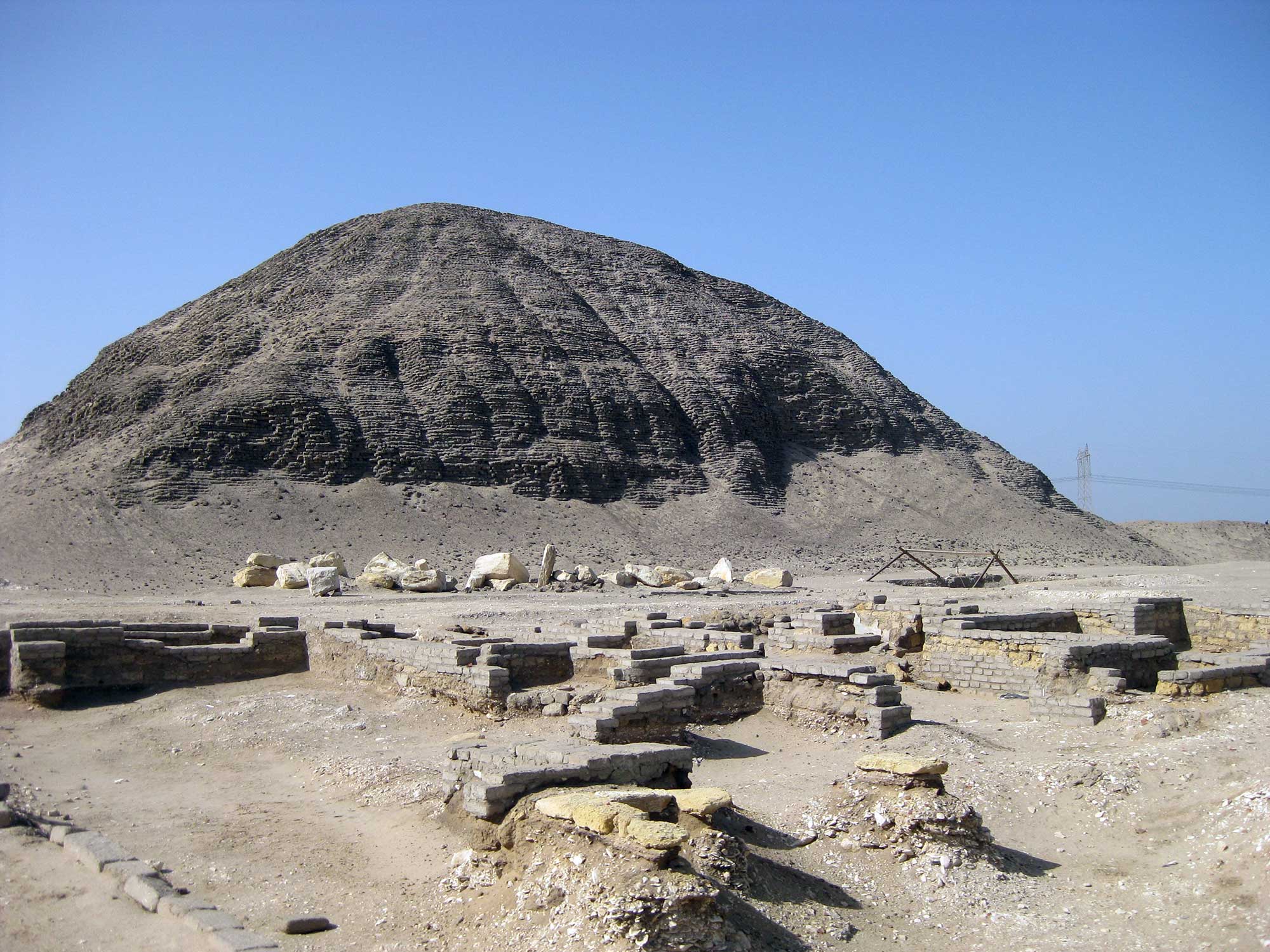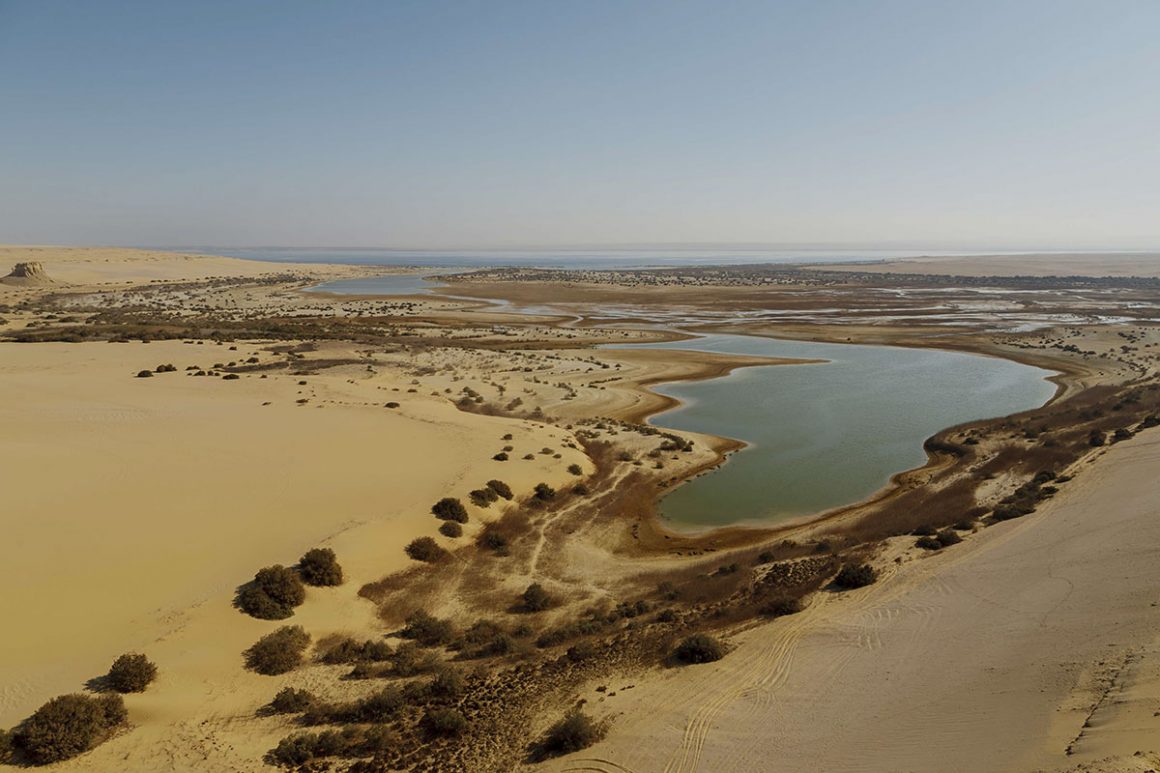The Faiyum Oasis
A city where life began at Wadi Hitan, with fossilized extinct whales, and where the largest waterfalls in Egypt at Wadi El-Rayyan pump life in a beautiful natural scenery. Both protectorates personify different phases of natural history.
The city also takes you back from the prehistoric farming communities gathered around Qarun Lake, to the Middle Kingdom mysterious capital of Egypt “Itj-Tawy”, passing by the twelfth dynasty pyramids and monuments, the famous Ptolemaic Temple and its adjacent Roman City.
The spiritual Monasteries and the Ottoman famous Hanging mosque, along with the ancient monuments and the natural scenery form one the best- and well-known touristic cities: Al Faiyum.
Lake of Qarun
The history of this ancient city started several hundred centuries before the unification of Egypt, with one of the oldest farming communities known until now, where people gathered around the Lake of Qarun, and thus its known as the Qarunian Culture.
Valley of Whales Protectorate (Wadi Hitan)

It is a paleontological site, a UNESCO World Heritage site, famous for the fossilized whales, the earliest -now extinct- forms of whales, in a desertified place which once was a lake suitable for the life of the extinct whales.
Wadi El Rayan
To the southeast, another natural protectorate exists, the lake and waterfalls of Wadi El Rayan, a heavenly site, 60 km west from the Nile which accommodates one of the world’s few remaining populations of the endangered gazelle species.
Pyramids at Faiyum

Although the site was abandoned in the Old Kingdom, kings of the Middle Kingdom realized its important strategic location and founded their new capital, Itj-Tawy (The Seizer of the Two Lands) there. The kings erected their pyramids at the royal cemeteries: El-Lahun, Hawara, and El-Lisht, built temples and shrines, and several monuments including colossal statues for Amenemhat III.
Qasr Qarun
On the northwestern side of the city, lies the lake of Qaroun and a famous temple dating from the Ptolemaic era and dedicated to Sobek, and it’s been a matter of scientific research, that on the twenty-first December of each year, rays of sunlight enter into the temple of Qasr Qaroun and illuminate the Holy of the Holies of the temple where statues of the god Sobek were placed and worshiped . As the temple remains in absolute darkness throughout the year and receives sunlight on this special day, the rare phenomenon is a scene that you just cannot afford to miss.
Kom Osheem Museum
In a transitional form of art, the Mummy Portraits, which were discovered by W.F. Petrie at a Greek/Roman Cemetery at Hawara, personifies the deceased in a spiritual form, these portraits flourished from the first Century BC until the end of the third Century AD, some of these portraits were transferred to Kom Osheem Museum.
Monasteries at Faiyum
In Faiyum, you’ll be able to visit The Monastery of Abu Khashaba, the oldest Monastery in the area, probably established in the fourth Century AD, and 12 martyrs of the city were buried in the southwest corner of the Monastery. Also, you can visit the oldest Church in the area (Virgin Mary Church) located within the Monastery Complex of Saint Abram, that dates to the twelfth Century AD.
The Hanging Mosque
Finally, an Ottoman mosque built by Sulaiman Ibn Hatim, The Hanging Mosque, named so, because it was built on a plateau, that can be reached from the bank of Bahr Yousef Channel.
Faiyum is a governorate located in meddle Egypt, it is the city where life began at Wadi Hitan.

